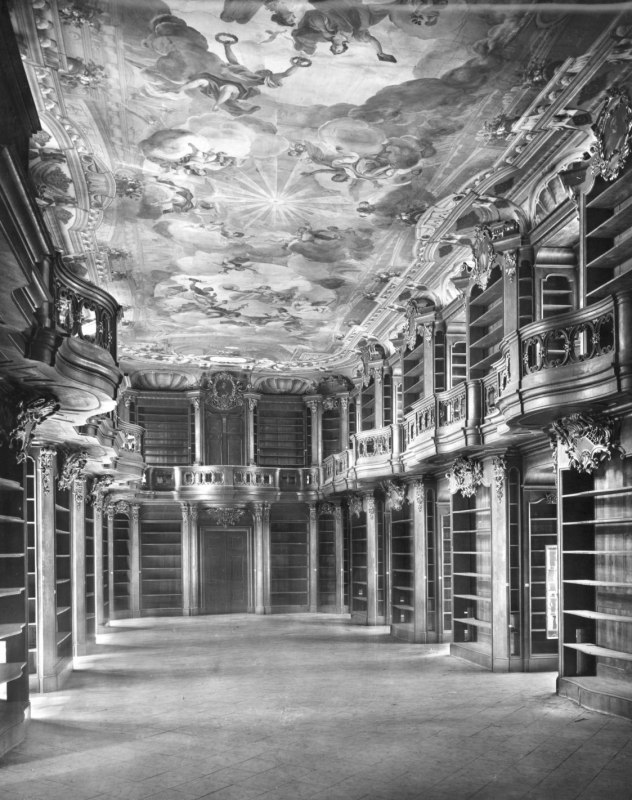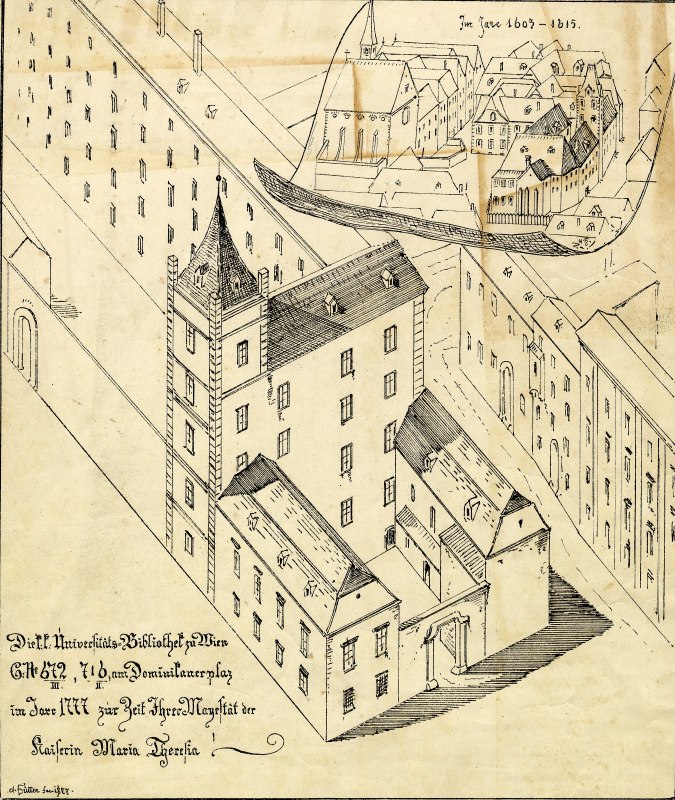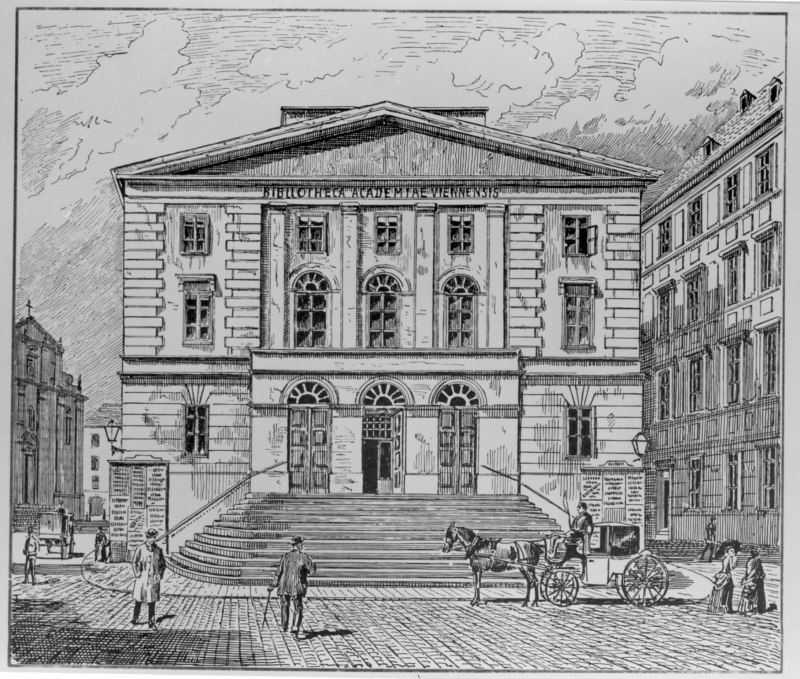The development of the university library into a modern institution
The University Library’s transformation into a modern institution began in the 1770s with the expansion of the inventory and the inauguration of the adapted library premises in the former Academic College. In the 19th century it then became a cornerstone of the academic activities in regard to research, teaching and study, over time picking up modern innovations and the gradual democratization of knowledge.
Re-establishment of the university library in 1777
As a consequence of the suppression of the Society of Jesus in 1773, the order library in the Academic College was handed over to the university by an imperial resolution. At the same time, the two remaining Jesuit libraries in Vienna – those at St. Anna and Am Hof – were incorporated and thus formed the foundation of the university library which was opened on May 13, 1777. The new library concept was based on usability. In other words, “nothing should be done for show, but everything to arrange a comfortable opportunity to study”, as was written in a royal court decree from 1776. Neither pomp, nor rare, old prints stood in the foreground, but instead the goal was to offer interested, academic readers recent scientific literature they could use during the opening hours in a reading room built specifically for that purpose. Only professors, however, were able to borrow books. Through the Josephinist dissolution of monasteries even more extensive collections were added to the University Library, which now had reached an extent of 45,000 volumes.
The gradual institutionalization of the library also encompassed other areas: The creation of catalogues facilitated faster access to the constantly growing collection. Library personnel were tightly organized by appointing a professor as head director, whose sole responsibility lay in the library, and by structuring a hierarchically organized staff system. In the 19th century the professionalization of library work was to take even clearer forms with the creation of a library education program.
Reading in the “herring barrel”
As a consequence of the newfound popularity of the new University Library in the old university quarter, the reading room was constantly overcrowded. Soon, the students began calling it the “herring barrel”. Apart from the lack of space, the already decrepit location in the library tract of the former Academic College also made renovations and an expansion necessary. It would take years until the renovations were begun, however. In 1827 the construction finally started, with plans made for extensive changes. Leopoldo della Santa’s 1816 book “Della costruzione e del regolamento di una pubblica universale biblioteca”, an early standard reference of the library sciences, had a great impact on this. The author’s main idea was to create a division between book, reader and librarian. To this end, he suggested building separate rooms for reading, administration and storage. His opening words are: “The public universal libraries preserve in their books all human knowledge and offer an opportunity to learn it. For this reason they must be counted among the necessary institutions of a civil society, taking up one of the foremost positions in it. Their design takes much consideration. In many of the existing libraries I see innumerable shortcomings to the detriment of the books, leading to irritation of the users and the inconvenience and hindrance of the employees.” The division of these three areas was implemented in the construction of the Viennese university library. Book storage and reading rooms were expanded, and working and living areas for the library personnel were created. In 1829 the University Library of Vienna shone in new splendor.
A modern library as a contribution to the “reshaping of public life”
The following years were marked by the reorganization of the systematically ordered books into a system following the numerus currens. The revolutionary year of 1848 brought about a second opening of the library’s stocks: The abolition of the existing censorship regulations and later the expansion of the loan system to all users, as well as inter-library loans within the Austrian monarchy were important steps towards modernity. Karl Hugelmann, a jurist and statistician, called these innovations a “reshaping of public life” in the Zeitschrift für Verwaltung in 1879. He continues: “In one go, the treasure trove of books in the Austrian university and study libraries became a communal treasure for the whole world of Austrian teachers and writers”.
Soon the library building in the old university quarter again became too small to hold the constantly growing collection of books. Thus, the library director had the plan to leave the library at its old location after the construction of the new main building of the university at the Ringstraße was finished, so as to use the now freed up rooms in the old building as extra space for the library. This failed due to the professorate’s opposition, because they wanted to have the books – as the foundation of teaching and research – close by. And so, in 1884, the almost 300,000 volumes were moved to the newly built University Main Building at the Ringstraße, which now embodied the identity-forming union of library and university.
-

Bibliothekssaal in der Alten Universität
Der barocke Lesesaal der Wiener Universitätsbibliothek mit dem Deckengemälde von Anton Hertzog aus dem Jahr 1735.
-

Die Universitätsbibliothek im Alten Universitätsviertel 1777
Auf dem Bild vermerkt: "Die k.k. Universitätsbibliothek zu Wien H[aus] Nr. 672, 716 am Dominikanerpla[t]z im Ja[h]re 1777 zur Zeit Ihrer Mayestät...
Zuletzt aktualisiert am : 12.11.2021 - 20:47



